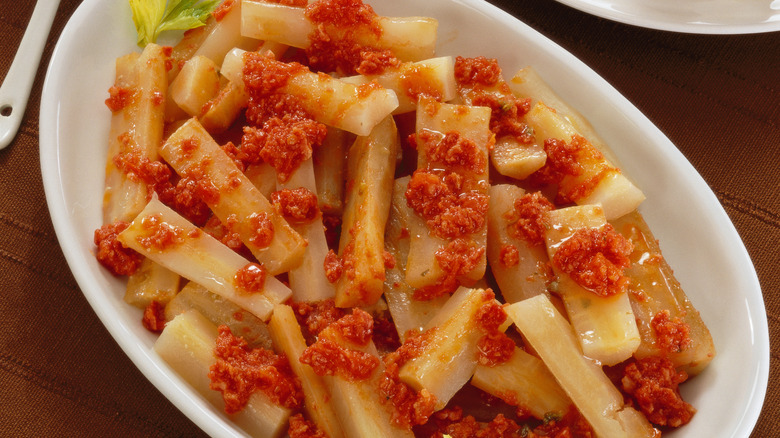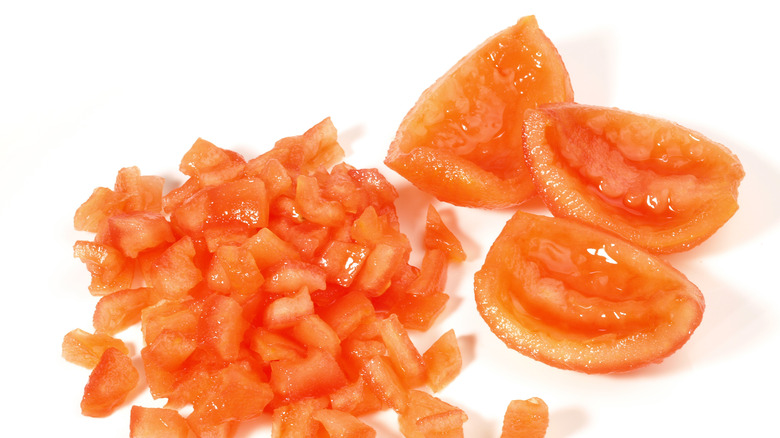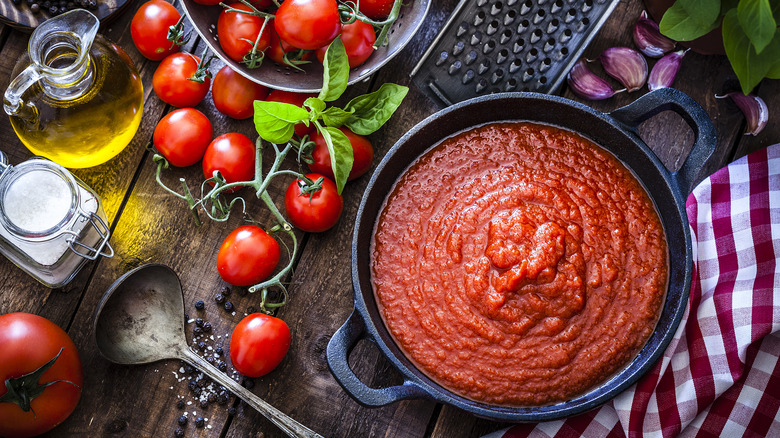What Is A Tomato Concasse Sauce And How Is It Different From Marinara?
Tomato sauce. Vodka sauce. Marinara sauce. Pasta sauce. There are a lot of different options for red sauces for dishes from various cuisines, and each has its own strengths and weaknesses they bring to the table. All are great additions to your dinner menu, but it's important to know when you might use each one. And there's another term you might've heard before: concasse. So what even is a concasse, and how is it different from, say, marinara sauce?
Well, to start with, at its core, a concasse isn't actually a sauce at all — at least not in the traditional sense. A concasse is essentially a peeled, roughly chopped ingredient turned into a topping. As such, it naturally lacks the liquidity of a traditional red sauce. But you can certainly alter a concasse into something like a sauce by adding liquid components — which is where concasse sauce comes in. Marinara, meanwhile, has no such modifications: it's a quick-cooked tomato sauce with garlic, crushed red pepper, and herbs.
A concasse isn't a sauce by itself, but can be turned into one
The word "concasse" means "to crush" in French, and that's a pretty accurate description of what a concasse is at its core. A concasse doesn't have to be made of tomatoes, but it most commonly is. To make a concasse, meanwhile, you score and then boil tomatoes so their skin loosens, then peel them and remove the seeds before chopping them to the desired level of chunkiness. Pretty simple, honestly.
You probably wouldn't want to use an unaltered concasse in pasta; it's not going to coat the various noodles the way you'd want from a tomato sauce. It's great for something like tomato bruschetta, but that lack of liquidity creates problems in a lot of other configurations. But when you either crush the chunks down or add a bit of liquid like white wine (or do both of those things), you're left with a chunky pasta sauce that gives you a thick chew. It's great for people who love not just tomato taste but also texture with their pasta.
Marinara is defined by its simplicity and thin texture
Marinara, meanwhile, is thoroughly defined as a sauce all by itself. When we think of "tomato sauce," we're usually thinking of marinara, as a traditional tomato sauce is a slow-cooked endeavor that takes hours to come together. Marinara, by contrast, is a tomato puree with garlic, red pepper flakes, and a simple herb and spice mixture with things like salt, pepper, oregano, and basil. While tomato sauce cooks and thickens over hours, marinara cooks quickly, typically only needing about an hour.
This short cooking time is important when we're talking about the difference between a marinara sauce and a concasse sauce, because it gets at the vast textural differences between the two. Because it cooks quickly from a puree, marinara has no time to thicken. While a concasse is typically even chunkier than a regular tomato sauce, marinara is a lot thinner even than that. All told, it's pretty easy to tell concasse from marinara just by looking at them.


